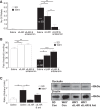Neuroimmune Cross Talk in the Gut. Neuroendocrine and neuroimmune pathways contribute to the pathophysiology of irritable bowel syndrome
- PMID: 27742703
- PMCID: PMC5130550
- DOI: 10.1152/ajpgi.00272.2016
Neuroimmune Cross Talk in the Gut. Neuroendocrine and neuroimmune pathways contribute to the pathophysiology of irritable bowel syndrome
Abstract
Irritable bowel syndrome (IBS) is a common disorder characterized by recurrent abdominal pain, bloating, and disturbed bowel habit, symptoms that impact the quality of life of sufferers. The pathophysiological changes underlying this multifactorial condition are complex and include increased sensitivity to luminal and mucosal factors, resulting in altered colonic transit and visceral pain. Moreover, dysfunctional communication in the bidirectional signaling axis between the brain and the gut, which involves efferent and afferent branches of the peripheral nervous system, circulating endocrine hormones, and local paracrine and neurocrine factors, including immune and perhaps even microbial signaling molecules, has a role to play in this disorder. This minireview will examine recent advances in our understanding of the pathophysiology of IBS and assess how cross talk between hormones, immune, and microbe-derived factors and their neuromodulatory effects on peripheral nerves may underlie IBS symptomatology.
Keywords: GLP-1; interleukins; leptin; myenteric; submucosal.
Copyright © 2016 the American Physiological Society.
Figures


Similar articles
-
Modulation of enteric neurons by interleukin-6 and corticotropin-releasing factor contributes to visceral hypersensitivity and altered colonic motility in a rat model of irritable bowel syndrome.J Physiol. 2014 Dec 1;592(23):5235-50. doi: 10.1113/jphysiol.2014.279968. Epub 2014 Sep 25. J Physiol. 2014. PMID: 25260633 Free PMC article.
-
Endocrine regulation of gut function - a role for glucagon-like peptide-1 in the pathophysiology of irritable bowel syndrome.Exp Physiol. 2019 Jan;104(1):3-10. doi: 10.1113/EP087443. Epub 2018 Dec 10. Exp Physiol. 2019. PMID: 30444291 Review.
-
Convergence of neuro-endocrine-immune pathways in the pathophysiology of irritable bowel syndrome.World J Gastroenterol. 2014 Jul 21;20(27):8846-58. doi: 10.3748/wjg.v20.i27.8846. World J Gastroenterol. 2014. PMID: 25083058 Free PMC article. Review.
-
Immunomodulation of enteric neural function in irritable bowel syndrome.World J Gastroenterol. 2015 Jun 28;21(24):7362-6. doi: 10.3748/wjg.v21.i24.7362. World J Gastroenterol. 2015. PMID: 26139983 Free PMC article. Review.
-
New insights into the pathophysiology of irritable bowel syndrome: implications for future treatments.Curr Gastroenterol Rep. 2005 Aug;7(4):272-9. doi: 10.1007/s11894-005-0019-8. Curr Gastroenterol Rep. 2005. PMID: 16042910 Review.
Cited by
-
Brain Functional Interaction of Acupuncture Effects in Diarrhea-Dominant Irritable Bowel Syndrome.Front Neurosci. 2020 Dec 15;14:608688. doi: 10.3389/fnins.2020.608688. eCollection 2020. Front Neurosci. 2020. PMID: 33384580 Free PMC article.
-
Gastric Mucosal Immune Profiling and Dysregulation in Idiopathic Gastroparesis.Clin Transl Gastroenterol. 2021 May 12;12(5):e00349. doi: 10.14309/ctg.0000000000000349. Clin Transl Gastroenterol. 2021. PMID: 33979305 Free PMC article.
-
Adipose Tissue-Derived Biomarkers of Intestinal Barrier Functions for the Characterization of Diarrhoea-Predominant IBS.Dis Markers. 2018 Nov 28;2018:1827937. doi: 10.1155/2018/1827937. eCollection 2018. Dis Markers. 2018. PMID: 30622656 Free PMC article.
-
Electroacupuncture in the treatment of IBS in rats: investigation of the mechanisms of CRH+ neurons in the paraventricular nucleus.J Neurophysiol. 2023 Aug 1;130(2):380-391. doi: 10.1152/jn.00156.2023. Epub 2023 Jul 12. J Neurophysiol. 2023. PMID: 37435647 Free PMC article.
-
Increased intestinal mucosal leptin levels in patients with diarrhea-predominant irritable bowel syndrome.World J Gastroenterol. 2018 Jan 7;24(1):46-57. doi: 10.3748/wjg.v24.i1.46. World J Gastroenterol. 2018. PMID: 29358881 Free PMC article.
References
-
- Aziz I, Trott N, Briggs R, North JR, Hadjivassiliou M, Sanders DS. Efficacy of a gluten-free diet in subjects with irritable bowel syndrome-diarrhea unaware of their HLA-DQ2/8 genotype. Clin Gastroenterol Hepatol 14: 696–703.e1, 2016. - PubMed
-
- Aziz Q, Thompson DG. Brain-gut axis in health and disease. Gastroenterology 114: 559–578, 1998. - PubMed
-
- Barrett E, Ross RP, O'Toole PW, Fitzgerald GF, Stanton C. γ-Aminobutyric acid production by culturable bacteria from the human intestine. J Appl Microbiol 113: 411–417, 2012. - PubMed
Publication types
MeSH terms
Grants and funding
LinkOut - more resources
Full Text Sources
Other Literature Sources
Medical

